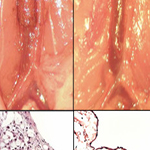Challenges in translating vascular tissue engineering to the pediatric clinic
Main Article Content
Abstract
The development of tissue-engineered vascular grafts for use in cardiovascular surgery holds great promise for improving outcomes in pediatric patients with complex congenital cardiac anomalies. Currently used synthetic grafts have a number of shortcomings in this setting but a tissue engineering approach has emerged in the past decade as a way to address these limitations. The first clinical trial of this technology showed that it is safe and effective but the primary mode of graft failure is stenosis. A variety of murine and large animal models have been developed to study and improve tissue engineering approaches with the hope of translating this technology into routine clinical use, but challenges remain. The purpose of this report is to address the clinical problem and review recent advances in vascular tissue engineering for pediatric applications. A deeper understanding of the mechanisms of neovessel formation and stenosis will enable rational design of improved tissue-engineered vascular grafts.
Article Details
How to Cite
DUNCAN, Daniel R; BREUER, Christopher K.
Challenges in translating vascular tissue engineering to the pediatric clinic.
Vascular Cell, [S.l.], v. 3, n. 1, p. 23, oct. 2011.
ISSN 2045-824X.
Available at: <https://vascularcell.com/index.php/vc/article/view/10.1186-2045-824X-3-23>. Date accessed: 29 nov. 2025.
doi: http://dx.doi.org/10.1186/2045-824X-3-23.
Section
Review

